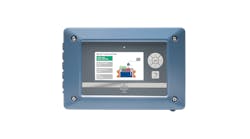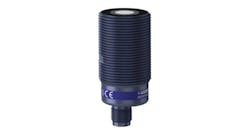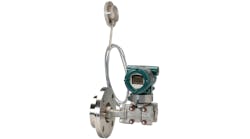|
T |
he very first recorded scientific measurement was the gauging of the rising and falling of the Nile using a level measurement device called a Nilometer several millennia ago. The Pharos used it as a process indicator for timing the planting cycle. Yet a recent CONTROL poll shows that level measurement is considered one of the two most vexing problems by process automation professionals. Another CONTROL poll indicated that the reasons advanced for this are either that the application was poorly designed, or that the level of the fluid (or solid) is itself very hard to measure, or that the measurement technology itself gives poor readings. If we’ve been measuring level for thousands of years, why do we still have so much trouble?
It’s About the Design of Processes
Certainly part of the problem is that most process engineers do not think of “level” as a control function. They think of mixing, batching, storing, surge control, and other process segments, which, to them, and strictly as a side issue, involve a level measurement. Many simulator programs for processes treat level measurement equivalently, and conventional loop tuning software is not always optimized for level loops. (See Sidebar below).
A process engineer in a chemical or pharmaceutical plant looks at the reaction happening inside a reactor vessel, and not the fact that because the reactor is sparged or agitated, it is exceedingly difficult to measure the level in the reactor. In fact, in the case of an agitated vessel, there is no level when the agitator is running. There is a vortex. What the operator wants to see is an inferred value: what the level measurement would be if the vessel’s contents were still. This is a very difficult value to present accurately, yet that is what the operator means when describing the “level” in that reactor vessel.
Many processes in the chemical industry, as well as in the pharmaceutical and even food processing sectors, are scaled up from pilot operations that may be as small as bench tops. In such cases, the controls are sometimes an afterthought, and not well integrated into the plant design. This, too, contributes to the difficulty of making a level measurement.
It’s About Vessel Design
Vessels are generally designed for the purpose of holding or processing a liquid or solid and not for the ease in measuring their levels. You find vessels built through floors of plants, vessels with only inlets and outlets and no measurement ports, vessels where there are so many internals that there are few ways to measure level. If the engineer who orders the vessel does not understand the process control loop of which the vessel is a part, it is likely that the vessel will be difficult to instrument for level measurement.
So what sort of things should our process engineer know to do when specifying the vessel? It is important to know about the purpose for which the vessel is to be used, as well as the characteristics of the fluid it will contain and the measurement technology being proposed.
But in the end, it is the performance of the vessel and sensor within the entire process loop that matters. As Expertune’s John Gerry says, “The performance goal of one level loop may be the opposite of another.” (See Sidebar below.)
Some vendors, such as Endress+Hauser have built online selection wizards that help end users and engineers select the correct level measurement technology. These wizards are helpful especially for the process engineer who doesn’t specify level measurement devices every day, and have the advantage that they are application specific, and not product-centric. Click on Product Selection Applicator to request a Free CD of the program, or just run it directly from the E+H website.
In his latest edition of the Instrument Engineer’s Handbook (CRC Press, Fourth Edition) Béla Lipták, devotes over 160 closely written pages to the measurement of level alone. This section of the IEH should be required reading for process and control system engineers. (See Lipták’s answer to a difficult level application in Ask the Experts.)
It’s About the Fluid or Solid Itself
Most level measurement vendors will tell you that it is extremely important to know the physical characteristics of the solid or fluid you are going to be measuring. Not only temperature and pressure, but the actual physical characteristics are sometimes critical to the success of a measurement. One vendor, Magnetrol International, has for years provided the non-commercial “Technical Handbook” with selected physical constants, including dielectric constants, densities, viscosity tables, steam tables, specific gravity, and much more. This book, or one like it, is invaluable to the designer of a level measurement system.
It’s About Measurement Technology
Some vendors make only one technology, others make a wide selection. They do this because it is easier to make a successful level measurement if you don’t use a technology at the outer edge of its technical operating envelope. For example, if you need a non-contacting measurement, you can use an ultrasonic gauge, that is unless you are in a pressure vessel, or the vessel’s contents have foam or large amounts of vapor or dust. In that case, you should specify non-contact radar, that only if you can get the sensor into the tank at the correct location. If not, then you are limited to using a nuclear gauge, or perhaps, a load cell. The advantage to choosing a vendor with a wide range of products and technologies for measuring level is that there is a better chance of getting a “do-over” if the first selection fails to perform as advertised.
In the case of clean fluids, you can use anything you want, from a float-type gauge to a person with a stick. “If K-Tek's float will float in your media without sticking problems, then you will have a very ‘forgettable’ level transmitter,” says Tom Jarrett regarding the instrument covered in the review.
For highly accurate measurement, there is a selection of products and technologies, as well. From differential pressure (Emerson Rosemount, Foxboro, Honeywell, etc.) and tank farm radar (Emerson Saab-Rosemount, Endress+Hauser), to hydrostatic tank gauging systems (King Gauge, Varec), and load cells (Hardy, Mettler Toledo, etc.), there is a high accuracy sensor to fit nearly all vessels and all media.
The Level Measurement Continuum
I’ve written before about what I call the “Level Measurement Continuum.” If you think of all of the possible level measurement applications as a continuum from “too easy to instrument” to “too hard to measure” it becomes easier to decide what sort of field instrument to make your level measurement with.
One of the reasons it is a continuum is that it is possible to use many different level measurement technologies on some of the same measurements. For example, you can measure water with a staff gauge, a float, a probe, ultrasonic or radar sensors, lasers, nuclear radiation, and by calibrated Mark I eyeball. Water sits on the “easy” side of the continuum. Molten steel level in the head box of a continuous casting process is not so easy. Many of the devices and technologies usable in a water level application go away when the fluid or solid becomes very hot, very cold, sticky, gooey, corrosive, abrasive, or otherwise noxious.
|
C |
ONTROL recently had the opportunity to preview a soon-to-be-released product from Expertune, called the Level Control Wizard. Expertune regularly wins the loop tuning software category in CONTROL’s Readers’ Choice Award poll, and is considered one of the market leaders in the category. Expertune’s president, John Gerry, shared with us that level is one of the more difficult loop types to tune, because many operators and engineers don’t understand the dynamics of level measurements. Expertune developed this new product in reaction to the demand from their customer base for an easier way to tune level loops.
“Level loops present a unique challenge to process control, Gerry says, “since they contain an integrator. This is further complicated because different level loops have different goals.”
To explain this concept, which is certainly not obvious to most operators, or to many engineers, Gerry continues, “The performance goal of one level loop may be the opposite of another. For example, many level loops provide better benefit to the plant when "tuned" sluggishly.”
Different level loops have different goals or requirements. Sometimes plants need fast and accurate control of level, other times it is best for the level to "float" so the vessel can absorb flow upsets. Gerry designed the wizard so that it guides users through the process of identifying the goals for the level loop; choosing the level control strategy that matches the plant's goals; and finding the best P, PI or PID parameters to meet those goals.
The software wizard optimizes level loops with the following level control goals: Fast and accurate control of level to setpoint; with and without D (derivative). The purpose of this goal is to improve the speed of recovery back to setpoint in the face of upsets. Averaging level, where the purpose of the tank is a surge vessel to smooth flow upsets. In this case the vessel is used to reduce the effects of upstream disturbances. The goal is that one unit feeding a second should disturb the second as little as possible. Averaging level with P (proportional) action only. In this example, the level is floating, maximizing the use of the surge vessel to smooth flow upsets. Averaging level with P and I (integral) action. In this case the level floats and slowly returns to setpoint.
Averaging level techniques may use tank volume. Using test data, the ExperTune Level Control Wizard automatically determines tank volume and controller settings.

Leaders relevant to this article:



